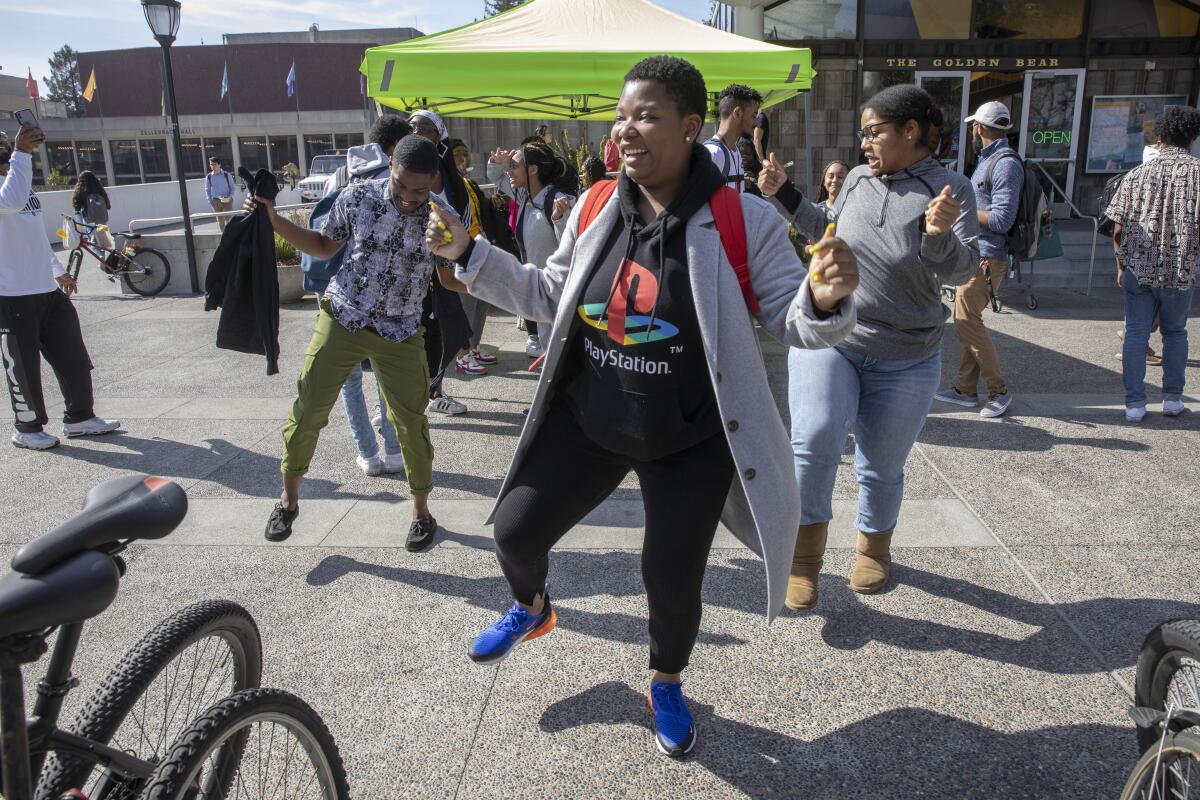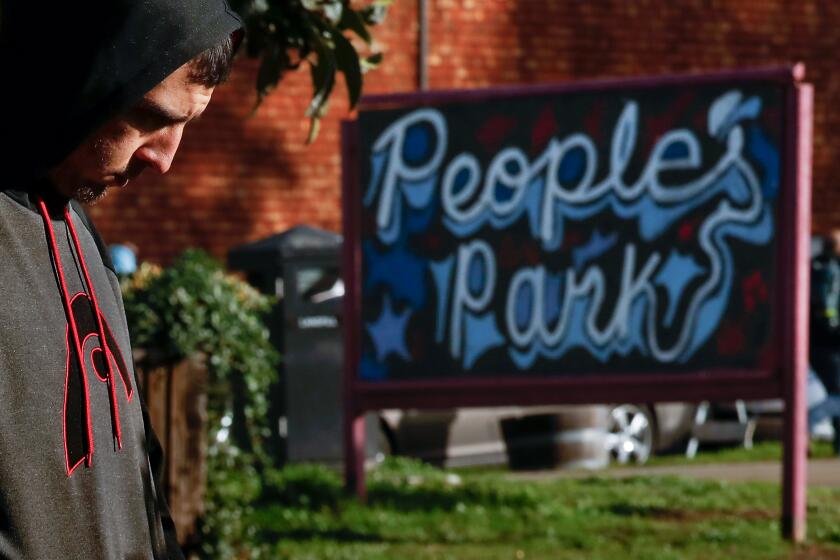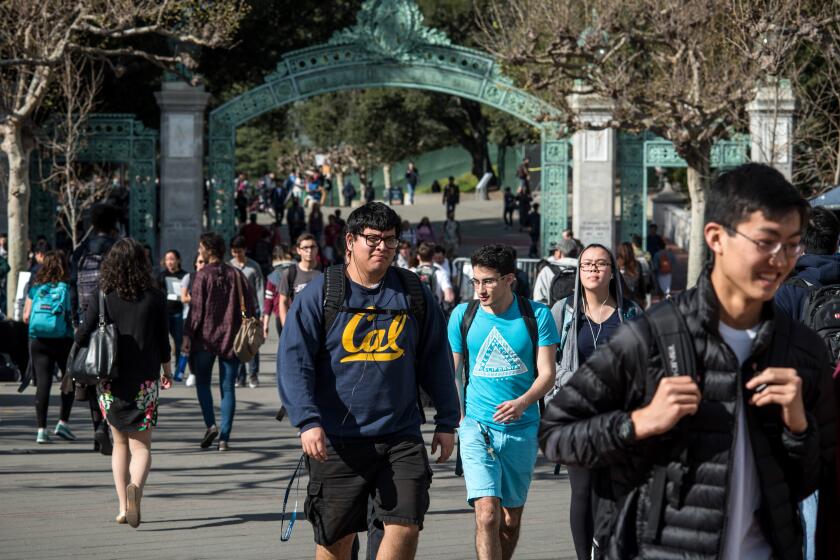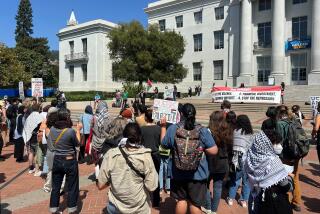Lawmakers unveil rescue effort to help UC Berkeley avoid enrollment cuts after court battle

California legislators are fast-tracking a rescue effort to help UC Berkeley avoid slashing its in-person fall class by more than 2,600 students to meet a court-ordered enrollment freeze, just as the university prepares to release admission decisions this month.
Under legislation introduced Friday, the state’s public colleges and universities would be given 18 months to complete any court-ordered environmental review before being subject to a mandatory reduction or freeze in campus population.
If passed by the Legislature and signed by Gov. Gavin Newsom, the legislation would take effect immediately and retroactively — allowing UC Berkeley to proceed with its original plans to enroll more than 5,000 first-year California students, according to state Assemblyman Phil Ting (D-San Francisco), who leads the Assembly Budget Committee involved in the legislation’s development.
In a joint statement Friday, Ting and Assembly Speaker Anthony Rendon (D-Lakewood) said the legislation struck the right balance between preserving California’s environmental protections and supporting college enrollment needed to increase the state’s educated workforce and keep the economy growing.
“We believe this addresses concerns from both sides and allows us to continue educating deserving students,” the legislators said. “When our legislation passes and allows the law to be applied retroactively, UC Berkeley will be able to resume its enrollment plan, which was disrupted by a misguided court order.”
The legislative efforts came after the University of California failed to persuade an appellate court and the California Supreme Court to stay a lower court order imposing the enrollment freeze. Alameda County Superior Court Judge Brad Seligman ordered the freeze in August, agreeing with a community group called Save Berkeley’s Neighborhoods that the university had failed to thoroughly review the impact of enrollment growth on housing, homelessness and noise in the area.
Assembly Bill 168 and Senate Bill 118, introduced by the budget committees in each house, also would remove the requirement in state law to consider the impact of enrollment increases in the environmental review of a campus’ long-range development plan.
The legislation explicitly declares that enrollment by itself is not a “project,” like a building, subject to review under the California Environmental Quality Act — an appellate court ruled that it was. Rather, public colleges and universities would be required to consider the impact of “campus population,” which would include staff and faculty, giving them flexibility to shield students from any court-ordered reductions in size.
In a unique partnership, UC Berkeley is working with the city and nonprofit groups to offer housing, meals and services to those living in People’s Park.
Under the legislation, courts would be authorized to halt a campus from increasing its population beyond projections in its most recent long-range development plan only if the campus failed to certify an environmental review within 18 months of a legal order to do so.
State Sen. Nancy Skinner (D-Berkeley), who heads the Senate Budget Committee, said several ideas to fix the problem were vetted, including setting a fall enrollment target for Berkeley above the court-ordered level.
But that ran into issues over the autonomy of the UC and judicial systems, she said, and would not address the broader possibility that the court ruling on enrollment could potentially be used to force reductions in the California State University and California Community Colleges systems.
So she came up with the plan to eliminate enrollment as a separate factor for environmental review under state law, since students are not the “sole environmental pollutant” among campus activities.
“As budget chair, I’ve been overseeing budgets that have increased funding to California’s higher education segments for this purpose of increasing enrollment for the last three years,” she said. “It is our objective to expand the opportunity for California students to get benefit from our public higher ed, and we wanted to make sure that we didn’t have a statute that was contrary to that objective.”
Phil Bokovoy, president of Save Berkeley’s Neighborhoods, said he was “agnostic” on the idea to give universities more time to complete court-ordered environmental reviews, so long as they were thorough. He questioned whether the period of 18 months, which would extend over two admission years, was too long and worried that UC Berkeley might “game the system” by trying to get extensions. But he said those were issues for elected representatives to address.
“The Legislature can do what they like,” he said.
The prospect of one of the nation’s most applied-to universities slashing what was initially feared would be one-third of its incoming fall class — 3,050 seats — set thousands of students and families on edge. Berkeley drew 128,192 first-year applications and 19,345 transfer applications for fall 2022. Last year, its admission rate was 14.5%. In a typical year, the campus admits 21,000 first-year and transfer students and enrolls about 9,500 of them.
In recent weeks, Berkeley has gone into overdrive rejiggering its enrollment plans to find as many spaces as possible for students under the court order.
The campus announced last week that it would enroll about 5,370 first-year California students both in person and online this fall, an increase of about 500 over last year. They would make up about 90% of all freshmen, compared with 70% last year. Among them, 4,370 would be enrolled on campus, while 1,000 would spend fall semester in remote classes and move to in-person instruction for spring semester, beginning in January 2023.
California transfer students would number 1,964 for on-campus enrollment for fall. Among 650 students who would be deferred until spring, the vast majority would be transfer students from California community colleges.
Campus officials had lamented that such contingency plans would deprive deserving students of the rich on-campus experience that they worked so hard to earn.

Olufemi Ogundele, UC Berkeley’s assistant vice chancellor and director of undergraduate admissions, said he was “heartbroken” by the loss of opportunity to so many students — especially after they showed such grit in maintaining stellar academic performances while navigating the challenges of the pandemic.
Ting noted, however, that UC brought the crisis on itself with two “major missteps.” First, he said, UC Berkeley badly underestimated its projected enrollment in its long-range development plan.
In 2005, the university projected it would enroll 33,450 students by 2020, but it had already exceeded that level by about 30% by 2017 — giving Bokovoy’s group grounds to ask the court to order a review of the environmental impact of more than 11,000 additional students.
Berkeley conducted the review, finding no significant impact. That prompted the neighborhood group and the city of Berkeley to demand a redo, arguing in a 2019 lawsuit that the campus review was inadequate and the conclusion wrong. In August, Seligman ruled in their favor, ordering Berkeley to perform a more thorough analysis and freeze enrollment at 2020-21 levels until it was completed.
“If the university had accurately identified their population growth, they probably wouldn’t be in the situation,” Ting said.
Then, the assemblyman said, UC failed to ask for a stay of the enrollment freeze at the same time it appealed the lower court ruling last October. UC did not do so until January, saying in court papers it had mistakenly believed the stay would automatically occur.
Ting said those missteps were more to blame for the enrollment snafu than any flaw in the state’s environmental review process.
“I don’t see this as a flaw within the process,” Ting said. “I really see it as … lawyers who really didn’t quite do their jobs for the university. But from that, I don’t think that … 5,000 students should suffer because the university lawyers didn’t do a good job.”
UC has acknowledged the mistakes, saying in court papers that it regretted the delay but argued it was an “excusable error.”
UC campuses need more housing, not more NIMBYism. But UC and the state must do better to soften the impacts of nonstop growth on campuses and in communities.
In a statement, UC Berkeley expressed gratitude for the legislative efforts to affirm the university’s responsibility under state environmental laws “while ensuring that current and prospective students aren’t harmed because of uncertainty around current policy.” The campus said it will be prepared to adjust its enrollment plans if the law changes.
Assemblyman Kevin McCarty (D-Sacramento) said he was “very confident” that the legislation will pass and enable UC Berkeley to fully enroll all students as planned this fall.
The legislation would give $50,000 to UC in order to make it related to the budget and thus able to take effect immediately. Newsom’s office declined to comment on the proposals, but the governor wrote an amicus letter last month urging the high court to stay the enrollment freeze.
McCarty said adding more campus housing is the long-term solution to statewide conflicts over the impact of enrollment growth on neighborhoods. He has championed legislation to help campuses do so, including the state’s first substantial contribution to student-housing projects last year, amounting to $2 billion through 2023-24 for the UC, Cal State and community college systems.
This year, McCarty is proposing a $5-billion zero-interest revolving loan fund for UC and Cal State, which he estimates could help the systems construct as many as 25,000 more campus beds by reaping huge savings in debt service for housing projects. UC San Diego Chancellor Pradeep Khosla, for instance, has said such a fund could generate savings of $2.1 million for every $100 million borrowed, which could provide 1,000 needy California students more financial aid and lower housing costs to as much as 38% below market rate.
“These are the real remedies to address the acute housing shortage at coveted UC and CSU campuses,” McCarty said.
More to Read
Sign up for Essential California
The most important California stories and recommendations in your inbox every morning.
You may occasionally receive promotional content from the Los Angeles Times.













